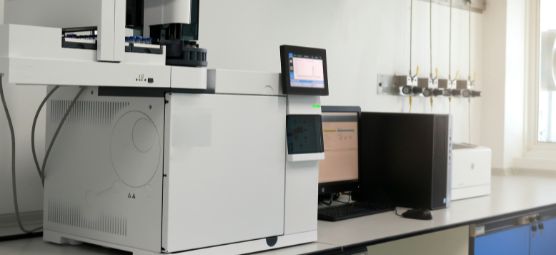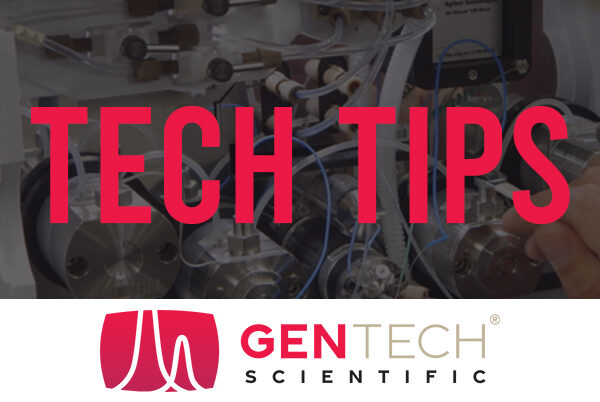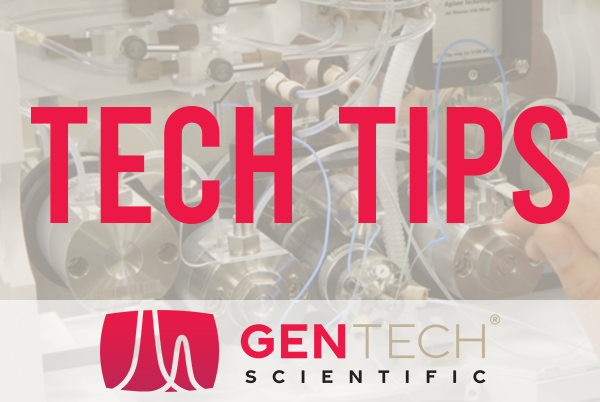The gas chromatography process has many applications, from food analysis to forensics and air quality measurements. However, no matter the application, gas chromatography has four components: injection port, carrier gas, column oven, and a detector.
These are complex processes and machines, but we’ll conduct a brief overview of gas chromatography components and gas chromatography equipment so that even those unfamiliar with the chemistry analysis can understand it better.
Injection Port
First, the sample is introduced into the gas chromatography machine through what’s called an injection port or a sample port. In most modern devices, the sample ports are heated to inject and vaporize the analyte simultaneously.
The injection port includes components such as a micro syringe, a rubber septum, and a vaporization chamber. The chamber is typically heated around 50° Celsius above the boiling point of the sample and then combined with the carrier gas.
Carrier Gas
The carrier gas serves a vital role in gas chromatography as it’s the vehicle that transports the vaporized sample into the column oven and eventually the detector. The carrier gas varies depending on the sample and its mix, but it’s always dry and free of oxygen.
Typical carrier gasses used in gas chromatography include:
- Helium
- Hydrogen
- Nitrogen
- Argon/Methane
In gas chromatography, a flow meter and pressure regulator methodically control the gas’s speed and flow throughout the process.
Column Oven
The carrier gas conveys the vaporized analyte into the column oven, which is heated precisely for exact compound separation. A column oven can work in two ways—with isothermal programming or temperature programming.
Isothermal programming means that the temperature in the oven is constant throughout the separation. Temperature programming means that the heat will constantly increase or increase in intervals for separation, depending on the sample.
Detector
The final step in the gas chromatography process is the analyte and carrier gas filter through the column oven and into the detector. The detector conducts quantitative measurements of the component and carrier gas.
Depending on the analysis and sample, gas chromatography can use different detectors to run various evaluations. Compound characteristics detectors can identify include:
- Flame ionization
- Atomic emission
- Thermal conductivity
- Chemiluminescence
- Photoionization
That’s a general overview of the primary components of gas chromatography, but there’s much more to know about this useful testing process. If you’d like to learn more about gas chromatography or equipment, contact the experts at GenTech Scientific. We are ready to answer any question you have.





